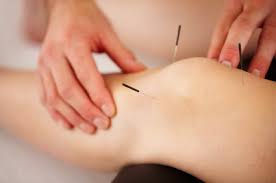CLINICAL MYOTHERAPY…WHAT IS IT??
Clinical Myotherapy is a branch of manual medicine focusing on the evidence-based assessment, treatment, and rehabilitation of musculoskeletal pain and dysfunction. This pain and dysfunction may arise from a muscular (contracture, overuse, post-trauma), neuropathic (nervous system), or articular (joint pain) origin.
As part of the three-year degree, Clinical Myotherapists spend much of their time studying musculoskeletal anatomy and pain referral patterns of individual and groups of muscles. In addition, many hours are focused on learning specialised techniques for the alleviation of muscular pain and dysfunction such as Dry Needling and Muscle Energy Techniques (MET’s).
This particular approach to musculoskeletal pain means that a Clinical Myotherapist may treat muscles that other therapists overlook, whilst their ‘hands-on’ approach to common conditions like headache, neck and shoulder pain, lower back pain and hip pain may differ.

Now, just because Clinical Myotherapists specialise in soft tissue, you shouldn’t expect a massage when attending every appointment. Clinical Myotherapy and Massage are two distinct professions with two distinct aims and objectives. The two therapies have highly different educational pathways, and as such, the treatment of the patient/client will inevitably be different.
In common with Physiotherapists, Chiropractors, and Osteopaths, a Clinical Myotherapist may use massage as part of a treatment when necessary. However, if the therapist does not think that massage is warranted then they may use joint mobilisation, dry needling, exercise prescription, or education on pain, load/exercise management and lifestyle modifications to manage the condition.

Personally, as well as having a Clinical Myotherapy degree, I have a background in professional dance and was a ballet dancer for many years. Through my training and performance I am aware of the demands of professional sport/dance and appreciate that good, early management of dysfunction (anywhere in the body) is important. In addition to being able to manage the common injuries that affect dancers such as lower back and hip pain and pain of the lower limb including the knee, ankle and foot, I can also guide my patients in regards to proper technique and preventative measures. Aside from managing sport/dance related pain, I also enjoy the challenge of helping all my patients, whether that be the office-worker, stay at home mum or retiree with chronic pain, get back to pain-free function.
